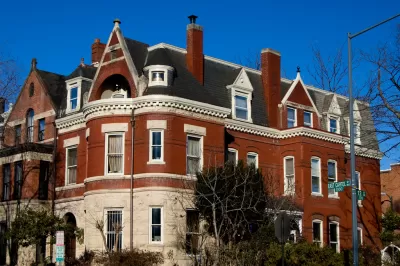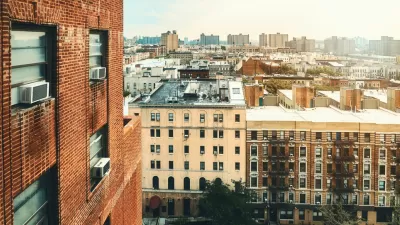In Washington D.C., ZIP code 20003 is split into two distinct areas: fiercely preserved Capitol Hill and the construction-heavy Capitol Riverfront. But where are rents skyrocketing, and what factors go into that equation?

"Not long ago," Payton Chung writes, "shiny new high-rise apartments around Navy Yard rented for more than the old rowhouses on the Hill. Now that many shiny high-rises have been built, they've become the cheaper option despite their 'luxury amenities.'"
As thousands of new residents take up occupancy in the "instant neighborhood" adjacent to the Anacostia, construction continues apace. In a phenomenon we've seen recently in cities like Seattle and Portland, abundant supply may really be keeping rents down for the time being.
The story is different in Capitol Hill, where the neighborhood's physical character is zealously guarded. "By contrast, people who want to move to the Hill, or even just move to a different apartment on the Hill, must compete for just a few empty apartments. As a result, prices are bid up."
But the widespread construction of tony "showplaces" in the historic shells of Capitol Hill houses attests to a different sort of change. "Even as the 'neighborhood character' of historic rowhouses has stood still, the neighborhood's population and social character have been transformed as ever-higher housing prices exclude all but the wealthy."
While the case of ZIP code 20003 may give hope to supply-side housing advocates, Chung also discusses why adding plentiful new units may stabilize prices, but won't necessarily lower them. Without the addition of housing supply throughout the city, this neighborhood-level effect may be very temporary.
FULL STORY: A tale of two 20003s: high rises or high rents

Planetizen Federal Action Tracker
A weekly monitor of how Trump’s orders and actions are impacting planners and planning in America.

Maui's Vacation Rental Debate Turns Ugly
Verbal attacks, misinformation campaigns and fistfights plague a high-stakes debate to convert thousands of vacation rentals into long-term housing.

San Francisco Suspends Traffic Calming Amidst Record Deaths
Citing “a challenging fiscal landscape,” the city will cease the program on the heels of 42 traffic deaths, including 24 pedestrians.

Amtrak Rolls Out New Orleans to Alabama “Mardi Gras” Train
The new service will operate morning and evening departures between Mobile and New Orleans.

The Subversive Car-Free Guide to Trump's Great American Road Trip
Car-free ways to access Chicagoland’s best tourist attractions.

San Antonio and Austin are Fusing Into one Massive Megaregion
The region spanning the two central Texas cities is growing fast, posing challenges for local infrastructure and water supplies.
Urban Design for Planners 1: Software Tools
This six-course series explores essential urban design concepts using open source software and equips planners with the tools they need to participate fully in the urban design process.
Planning for Universal Design
Learn the tools for implementing Universal Design in planning regulations.
Heyer Gruel & Associates PA
JM Goldson LLC
Custer County Colorado
City of Camden Redevelopment Agency
City of Astoria
Transportation Research & Education Center (TREC) at Portland State University
Jefferson Parish Government
Camden Redevelopment Agency
City of Claremont





























